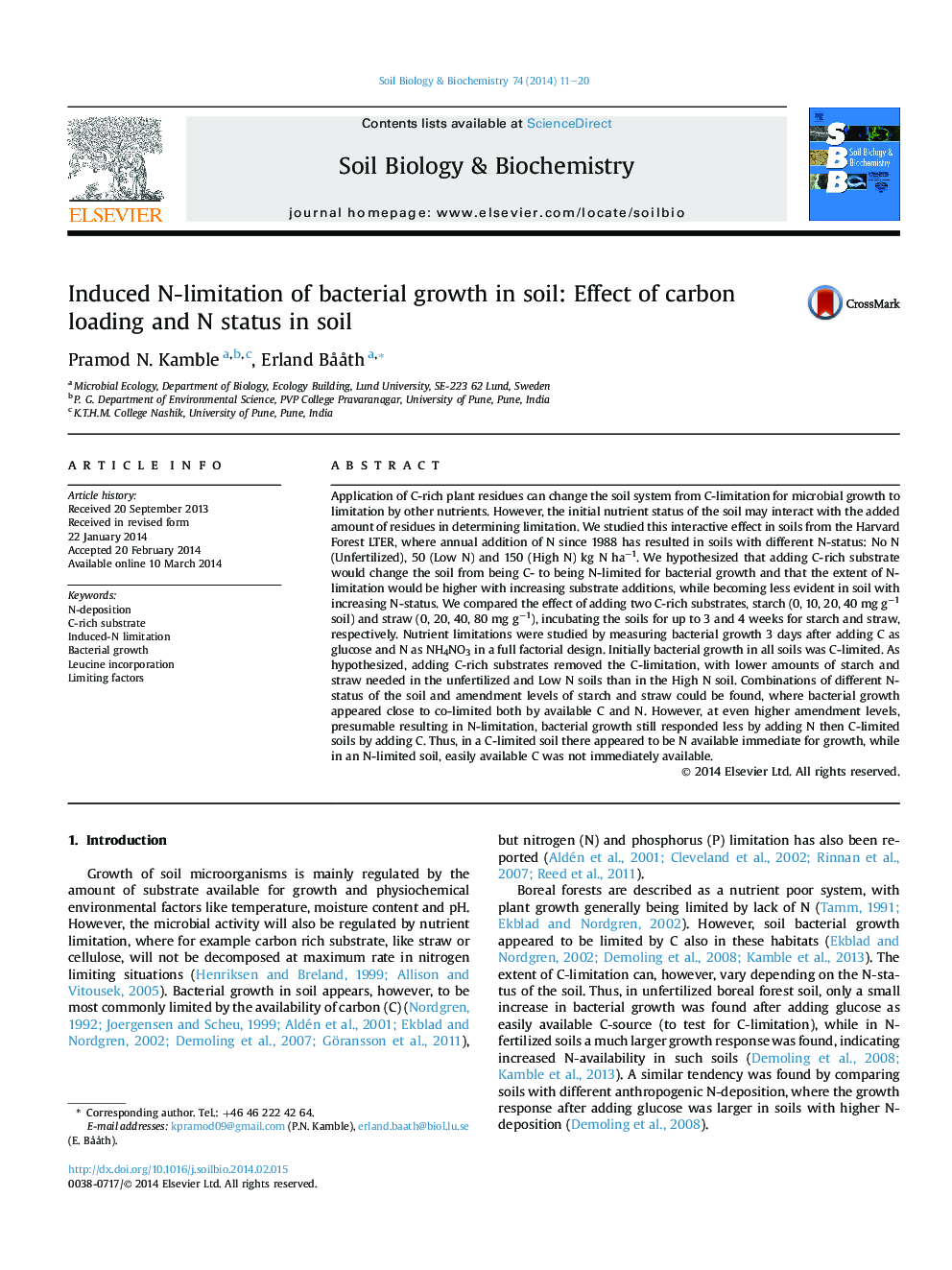| Article ID | Journal | Published Year | Pages | File Type |
|---|---|---|---|---|
| 2024607 | Soil Biology and Biochemistry | 2014 | 10 Pages |
•Adding C-rich substrate to soil altered bacterial growth limitations from C to N.•Initial soil N-status and amendment rates interacted in determining limitation.•Combinations of soil N-status and amendment rates resulted in co-limitation.•Adding straw or starch gave similar results.•Growth in N-limited soils responded less to N-addition than C-limited soils to C.
Application of C-rich plant residues can change the soil system from C-limitation for microbial growth to limitation by other nutrients. However, the initial nutrient status of the soil may interact with the added amount of residues in determining limitation. We studied this interactive effect in soils from the Harvard Forest LTER, where annual addition of N since 1988 has resulted in soils with different N-status: No N (Unfertilized), 50 (Low N) and 150 (High N) kg N ha−1. We hypothesized that adding C-rich substrate would change the soil from being C- to being N-limited for bacterial growth and that the extent of N-limitation would be higher with increasing substrate additions, while becoming less evident in soil with increasing N-status. We compared the effect of adding two C-rich substrates, starch (0, 10, 20, 40 mg g−1 soil) and straw (0, 20, 40, 80 mg g−1), incubating the soils for up to 3 and 4 weeks for starch and straw, respectively. Nutrient limitations were studied by measuring bacterial growth 3 days after adding C as glucose and N as NH4NO3 in a full factorial design. Initially bacterial growth in all soils was C-limited. As hypothesized, adding C-rich substrates removed the C-limitation, with lower amounts of starch and straw needed in the unfertilized and Low N soils than in the High N soil. Combinations of different N-status of the soil and amendment levels of starch and straw could be found, where bacterial growth appeared close to co-limited both by available C and N. However, at even higher amendment levels, presumable resulting in N-limitation, bacterial growth still responded less by adding N then C-limited soils by adding C. Thus, in a C-limited soil there appeared to be N available immediate for growth, while in an N-limited soil, easily available C was not immediately available.
